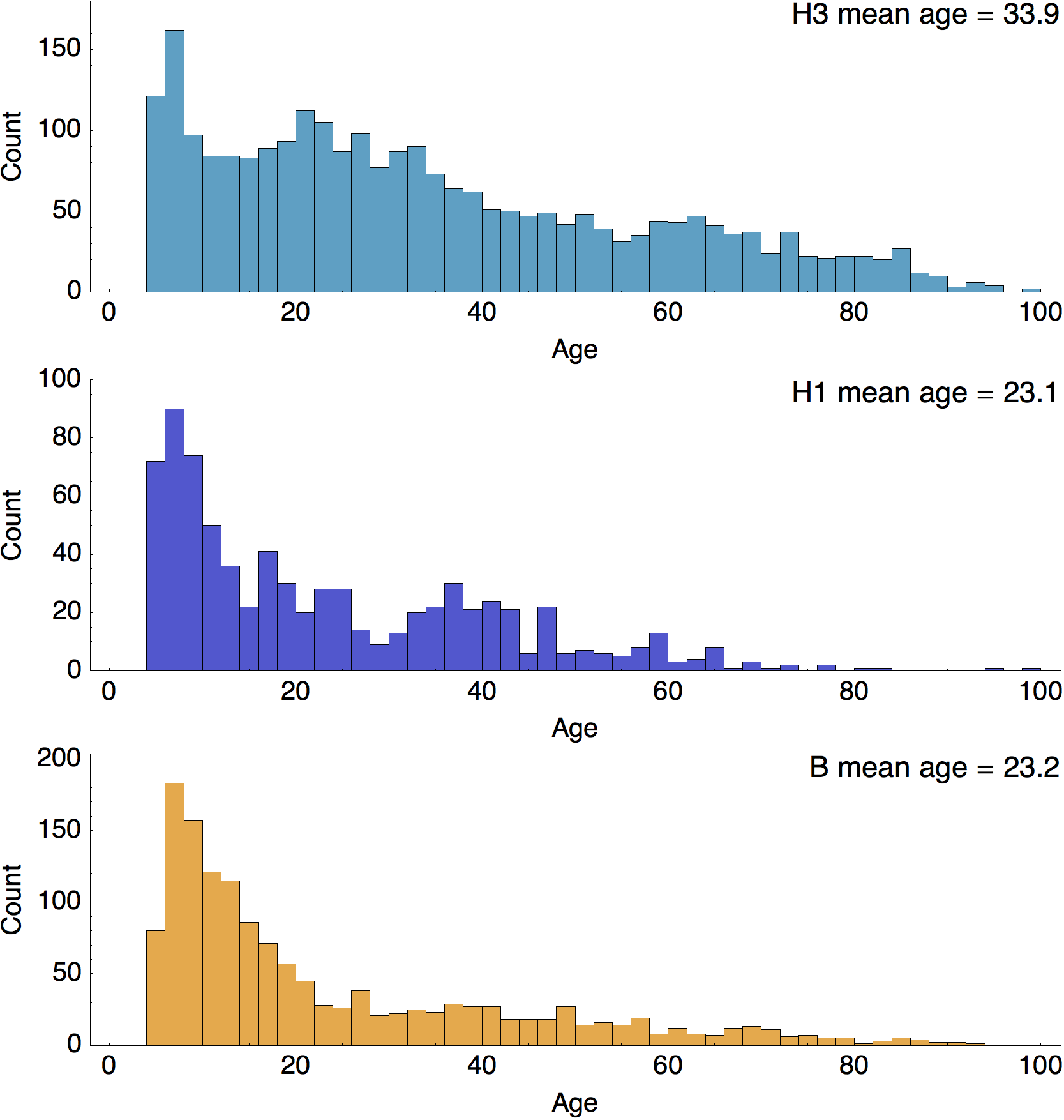Air travel by age
Data on air travel comes from the CAA Passenger Survey Report 2011. This gives age structure of ~102,495,000 passengers at the two busiest UK airports, London Heathrow (https://github.com/blab/global-migration/tree/master/age-structure/LHR) and London Gatwick (https://github.com/blab/global-migration/tree/master/age-structure/LGW) airports in 2011. During 2011, Heathrow saw 69,222,000 passengers. Gatwick saw 33,273,000. Bins were averaged between the two airports.

Incidence by age
Data comes from the Melbourne collaborating center and is given as a table here. Data was restricted to just Australia. Isolates by age were tallied for H3, H1 and B. Here, I removed reports from children less than 5.

Contact rates
Putting this together, we take proportion belonging to age bracket X in travel distribution and multiply this by proportion belonging to age bracket X in incidence distribution. This gives weighted contact rates.
| H3 | H1 | B |
|---|---|---|
| 10.3 | 8.7 | 7.2 |
It doesn’t appear that we can get a 2X differential in migration rates between H3 and B from this. Scaling rates relative to H3 gives:
| H3 | H1 | B |
|---|---|---|
| 100% | 84% | 70% |
Alternatively, scaling rates to B gives:
| H3 | H1 | B |
|---|---|---|
| 143% | 121% | 100% |
Two-compartment model
Age structured model with two-compartments. These are children (0-15 years) and adults (16+ years).
Air travel
The air travel data (combined with population demography) suggests that children travel at 19% of the rate of adults.
Mixing
Mossong et al. (2008) give contact rates between people of different ages in Europe. Rohani et al. (2009) show that this contact matrix works extremely well for modeling pertussis.
This matrix suggests that adults contact adults at 26% of the rate that children contact children and that children contact adults (and vice versa) at 21% the rate that children contact children.
Incidence
The incidence data suggests that H3N2 infects children 30% of the time and influenza B infects children 60% of the time. These are targets (not inputs) for the model.